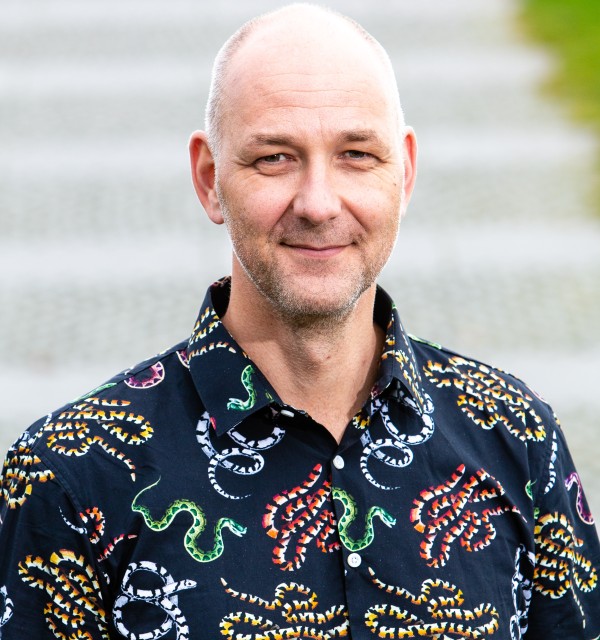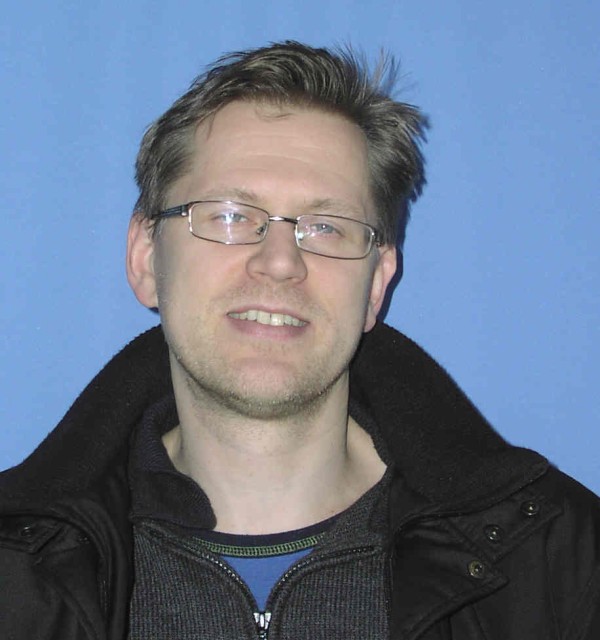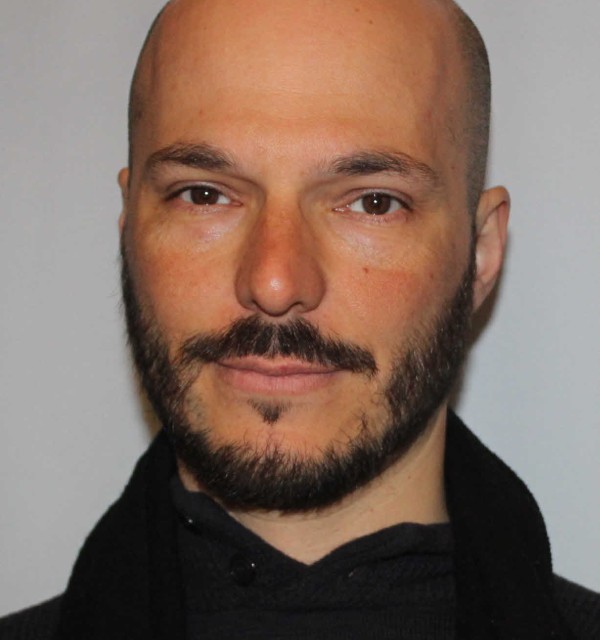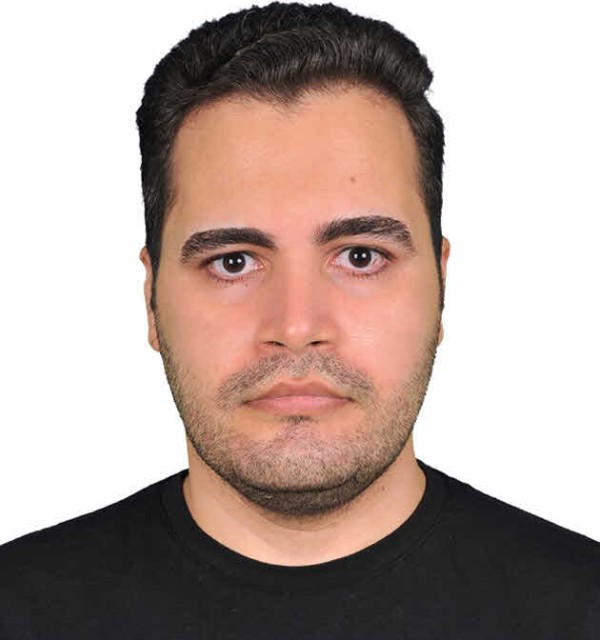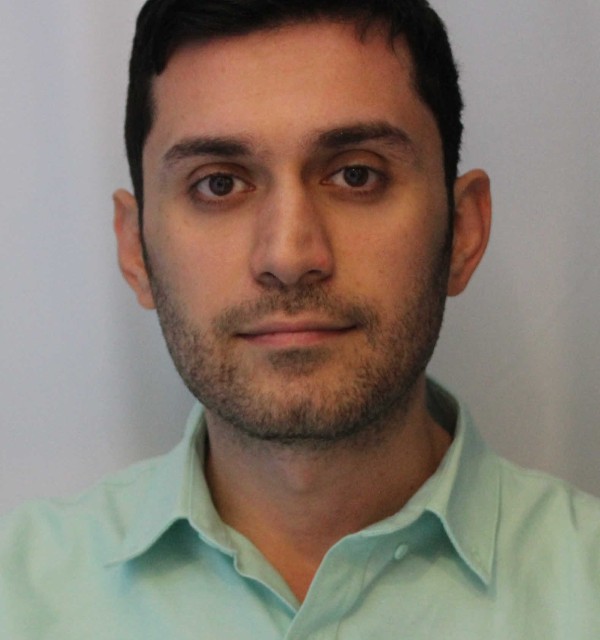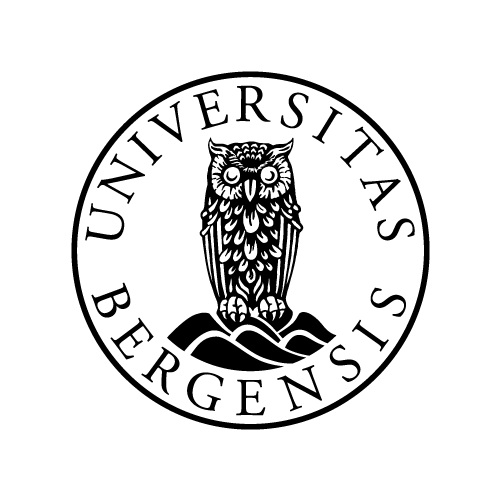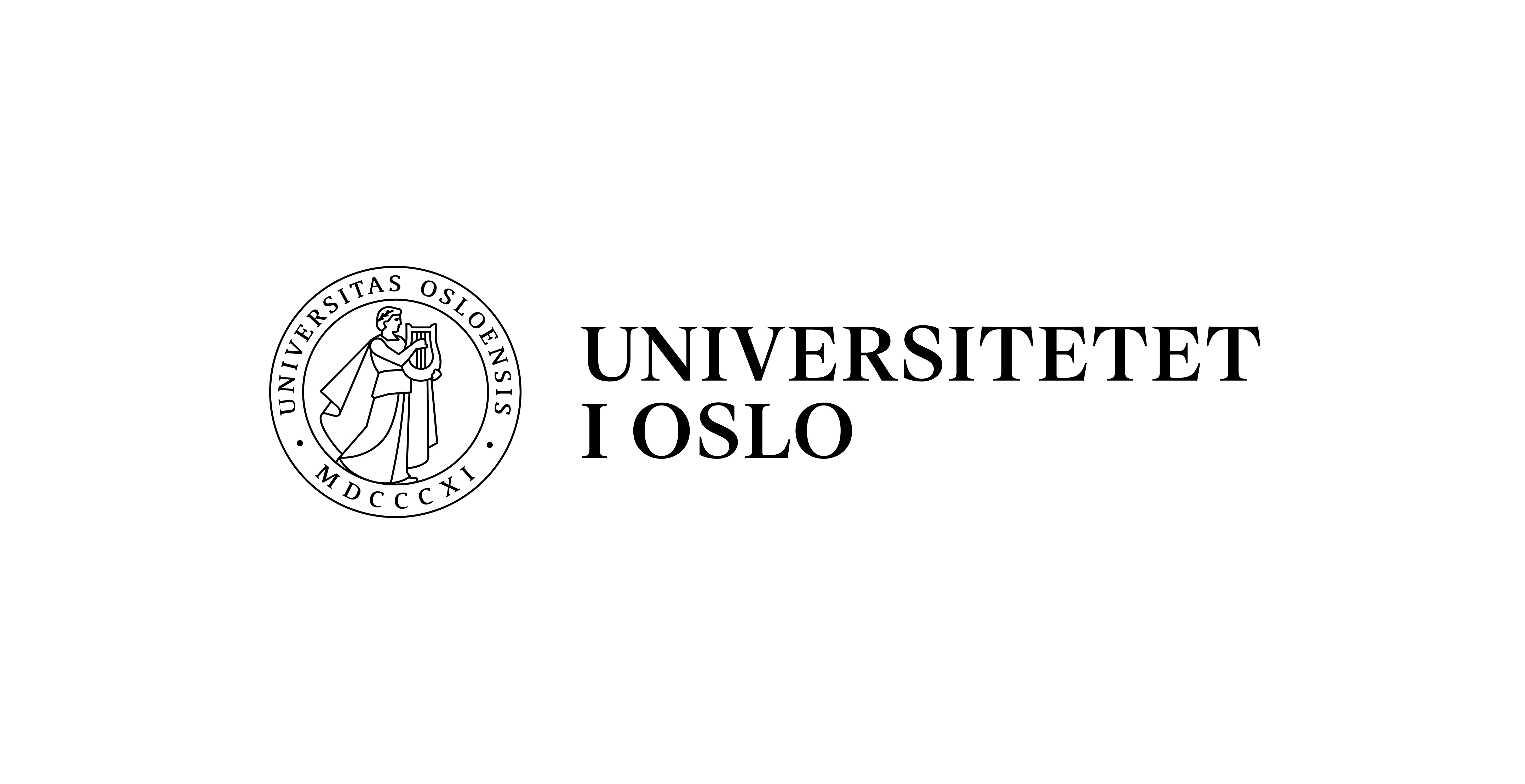Computational engineering is a discipline that deals with the development and application of computational models and simulations, often coupled with high-performance computing, to solve complex physical problems arising in engineering analysis and design as well as natural phenomena.
7
3
2
Research in the field of Computational Engineering focuses on the development and application of mathematical and numerical models to analyze complex and uncertain systems for gaining knowledge and insights into the systems. Computational engineers use a physics and data driven approach to solve problems.
The ultimate goal of both data science and computational engineering is to support decision making, but the main emphasis in data science is data whilst the main emphasis in computational engineering is models (including data-driven models).
Prospective individualization of contrast dose in CT angiography of coronary vessels
In a CT examination of the heart, it is desirable to achieve a good contrast charge in the blood vessels without giving more contrast than necessary.
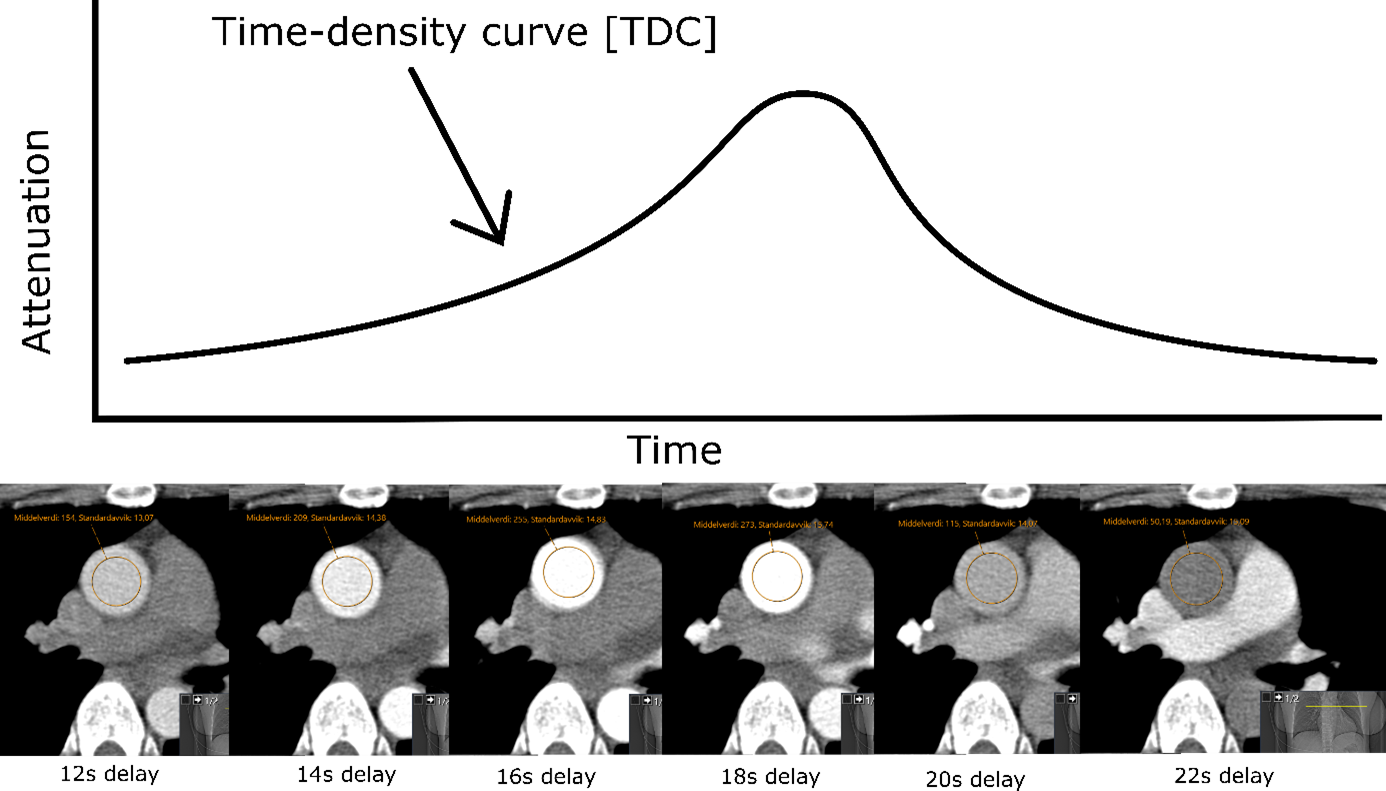
We will use patient data and mathematical models to optimize the amount of contrast given. It is important to take images at the optimal time, i.e. when the contrast is in the coronary arteries. Normally, this is done with the help of a preliminary examination in which a small dose of contrast is given, a so-called test bolus. We suggest using the information from the test bolus together with our mathematical models to more accurately predict which dose we need to give to achieve an optimal contrast charge in the coronary arteries. In this way, for each individual, the exact amount of contrast that is necessary for the examination to be optimal can be adjusted. The project is divided into two parts. The first part deals with the validation of our mathematical models, while the second part deals with the individualization of the amount of contrast.
Palliative strategies for single-ventricle heart disease management
Almost 1% of babies worldwide, and 500-600 babies in Norway, are born with clinically significant structural defects in their heart (congenital heart disease, CHD).
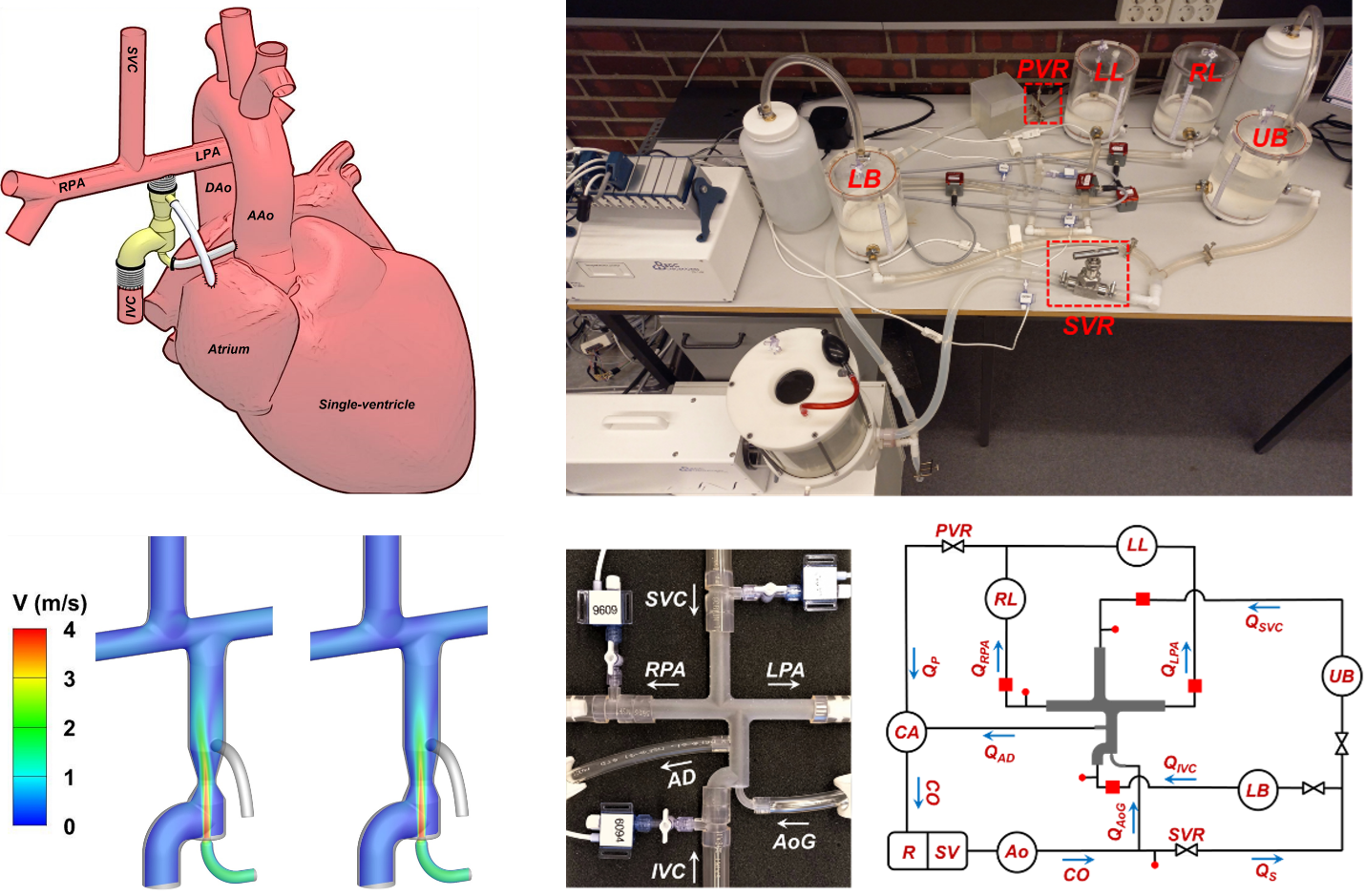
A normal heart has two pumping chambers known as ventricles, one of which circulates oxygenated blood and the other which sends deoxygenated blood to the lungs. Single-ventricle heart malformations are the most serious type of CHDs because the baby has only one functional ventricle. The mixing of oxygenated and deoxygenated blood streams in the single ventricle results in extremely low arterial blood oxygen saturation which is fatal. These patients undergo a series of surgeries within the first year of their life to survive. The surgeries are designed to separate the vena caval veins (which return deoxygenated blood to the heart) from the heart and connect them directly to the pulmonary arteries, resulting in Fontan circulation. The peculiar Fontan physiology causes non-pulsatile pulmonary flow and elevated venous pressure due to the lack of a subpulmonary ventricle, which can lead to serious complications such as liver disease, protein-losing enteropathy, and eventually failure. The aim of this project is to provide innovative palliation for the growing population of patients with failing Fontan. One of our novel solutions to the Fontan paradox that is clinically feasible and self-powered is the Venous Ejector Pump (VEP). In silico evaluations using computational fluid dynamics as well as in vitro pulsatile tests revealed that the proposed solution has the potential to provide meaningful support for Fontan patients.
This project is supported by Equinor Akademia programme.
Improved models for blood flow
We are focused on utilization and development of state-of-the-art computational engineering techniques such as lattice Boltzmann method (LBM), to establish effective tools for gaining knowledge and understanding of hemodynamics in the cardiovascular system.

These methods are aimed at providing more accurate and detailed simulations of blood flow and better understanding of the complex interactions between blood cells, plasma and intricated geometries. The goal is to use these tools to improve our understanding of the cardiovascular system and to support the development of diagnostic and therapeutic approaches for cardiovascular diseases.
The LBM method is a recent advancement in computational fluid dynamics, and particularly in blood flow simulation. Because of its local operations, it is straight forward to integrate, benefit from automated and efficient mesh pre-processing, and is an excellent candidate for highly scalable parallel processing. LBM is a mesoscopic particle-based method, and one has easier access to the underlying physics and more possibilities to include realistic physical descriptions of important phenomena. The LBM is hence, an advantageous approach for simulating high-Reynolds-number flows and non-Newtonian fluids, such as blood. Its capability to model complex geometries and fluid flows make it a valuable tool in hemodynamic modeling and investigations. Furthermore, LBM's ability to accurately capture the key physical characteristics of complex fluids makes it a suitable candidate for such simulations.
The picture shows flow of a non Newtonian fluid in a Fontan prosthesis. The project is supported by Equinor Akademia programme.
Related research areas
Researchers
Collaborators
University of Bergen
Stavanger University Hospital
NORCE
Sahlgrenska University Hospital
Oslo University Hospital
University of Oslo
Related articles
Energy students awarded for their efforts
Repsol awarded a total of four prizes and NOK 120,000 to master students at University of Stavanger.
New methods for characterization of impurities in chalk
Tine Vigdel Bredal has investigated different methods for analyzing chalk at core level and right down to the smallest s...
UiS students won the Laurie Dake Challenge
Master students from University of Stavanger won the prestigious student competition during the geology conference EAGE ...
He is Energy Professional of the Year
Reidar Bratvold won the prize as Energy Professional of the Year at the SPE gala.
Highlights from the first UiS Petro-Games
In a riveting showcase of industry knowledge and teamwork, the inaugural UiS Petro-Games competition proved to be a reso...
Analytical Solutions Toolbox for Multiphase Core Analysis
Developing a digital toolbox for Special Core Analysis (SCAL).
Seismic inversion methods for reservoir characterisation
Nisar Ahmed has developed a workflow for seismic inversion methods to estimate the rock-properties in a reservoir.
Impact Case: The National IOR Centre of Norway
The National IOR Centre has provided cost efficient and environmentally friendly solutions for improved oil recovery on ...
Special Core Analysis – Modeling, Experimental Design and Upscaling
Prediction of subsurface multiphase or single-phase flow processes is challenging, but important for oil and gas product...
Industry awards to energy students
Repsol and Vår Energi awarded a total of nine prizes and NOK 350,000 to bachelor and master students at UiS.
What does the energy industry need?
Researchers at University of Stavanger have asked the industry to define their education needs in the years to come.
Energy Norway 2023 summed up
This year's conference theme: Subsurface for energy security and sustainability.
Understanding the initial wettability of reservoirs
Panagiotis Aslanidis defended his thesis on wettability for core analysis. The purpose of his research was to link reser...
Twinning to Sustainable Energy Transition (Twinn2SET)
The European Union is facing a pressing challenge to transition into a carbon neutral economy by 2050. Researchers from ...
Kick-off for new energy transition project
The European Union is facing a pressing challenge to transition into a carbon neutral economy by 2050. Researchers from ...
Defended his thesis on reservoir optimization
Micheal B. Oguntola has studied optimization and modelling of enhanced oil recovery injection strategies in his PhD proj...
Defining Future Subsurface Education Needs in Collaboration with the Energy Industry
This project (SUBSET) aims to increase the relevance of subsurface course content to actual needs in the energy indust...
Subsurface Utilization for Renewable Energy
The Subsurface Utilisation and Renewable Energy group addresses the latest issues related to the energy transition, unde...


